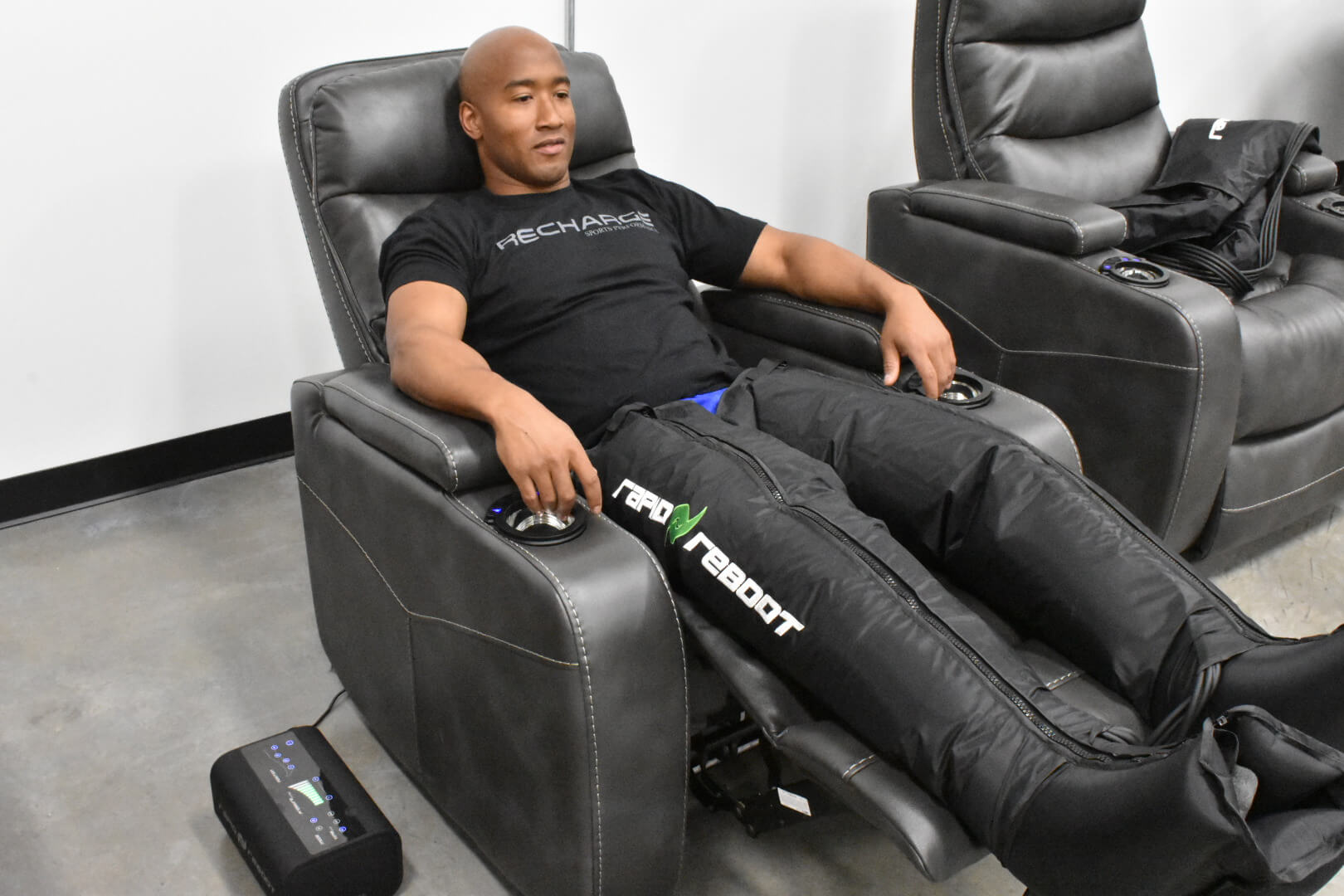When you train as you are adapting the body to a certain activity to improve performance. If all you are doing is training and not recovering you will inhibit that adaption and stall growth, this is called underrecovery. Underrecovery is not exclusive to just one type of athlete. This can apply to any activity you are doing whether it be sports, dancing, playing music, or even doing chores around the house. The issue with underrecovery is it can cause overreaching. The period of inhibition of performance or the stop of growth is called ‘overreaching’. Overreaching is the buildup of training and/or training stress leading to temporary impairment of performance capacity”(1). While you are in this state it will take you several days to a week to restore performance capacity. During these days of waiting, it is not recommended to train due to fatigue and pain which slows your overall progression, increases your chance of injury, and reduces performance. By optimizing recovery with Athlecare, you can shorten or even prevent any overreaching thus improving your performance and preventing injury.
Optimizing recovery means we are reducing the time of recovery, preventing overreaching/injury and improving performance. Optimizing recovery is done through therapeutic and physical modalities. Modalities are tools to create a positive physiological change in the body and classified as either physical or therapeutic. Physical modalities are typically performed by a professional like massage, joint mobilizations, or muscle scrubbing. Therapeutic modalities are usually a tool or machine like acupuncture, Cupping, or photobiomodulation. These modalities cause recovery optimization by increasing the metabolism of the body’s cells, increasing blood flow, affecting the neurology of the body, removing adhesions, improving body alignment, and removing toxins through the lymphatic system. When you are constantly using these modalities to optimize your recovery, you are creating a positive adaptation within your body that increases healing, promotes muscle growth, and reduces pain. Athlecare gives you the means to constantly recover by giving your unlimited access to all its modalities and the education to know what modalities to use for your specific situation. Furthermore, Athlecare optimizes recovery by, using correct parameters for each modality, giving you sport-specific injury recovery training, and personalizing all recovery. Athlecare is the only place where you can get all of this and get it at an extremely affordable price.
Without consistent sports recovery you will develop overreaching which will lead to decreased performance and injury. By committing to a recovery regiment, you will improve your performance and reduce your risk of injury while training by up to 50-75%(2). Athlecare provides all the essential modalities, training, and modalities to make your recovery easy and affordable so that all you have to worry about is training as hard as you can. Creating this regiment is paramount when striving to be and elite athlete. The time spent recovering should be fairly proportionate to the time training. Specifically how much you should be recovering in ratio to training is very individual (3). This is why it is important to have a trainer optimize your recovery regiment to your needs. By creating your Athlecare Recovery Plan you will be able to perform at a high level for many years. If your desire is to be active for the majority of you life then Athlecare is a need for you.
Even if you are not training to be an Elite athlete age plays a large part for the need of recovery. As you get older your ability to recover does not change, but how quickly you recover does. This means you still have every capability to progress in your performance, but it may take longer and require more recovery. By being apart of an Athlecare Plan you will be enabled to be more active and do more with your body. If your desire is to be active for life, have limited injuries, and perform at a higher level, then Athlecare is the place for you.
1. Peake, J. M. (2019). Recovery after exercise: what is the current state of play? Current Opinion in Physiology, 10(2019), 17–26. https://doi.org/https://doi.org/10.1016/j.cophys.2019.03.007.
2. Lower Limb Preventive Training Program. A.T. Still University, Mesa, AZ
3. Kellmann, M., Bertollo, M., Bosquet, L., Brink, M., Coutts, A. J., Duffield, R., Erlacher, D., Halson, S. L., Hecksteden, A., Heidari, J., Kallus, K. W., Meeusen, R., Mujika, I., Robazza, C., Skorski, S., Venter, R., & Beckmann, J. (n.d. ). Recovery and Performance in Sport: Consensus Statement, International Journal of Sports Physiology and Performance, 13(2), 240-245. Retrieved Jul 6, 2021, from http://journals.humankinetics.com/view/journals/ijspp/13/2/article-p240.xml








One Comment